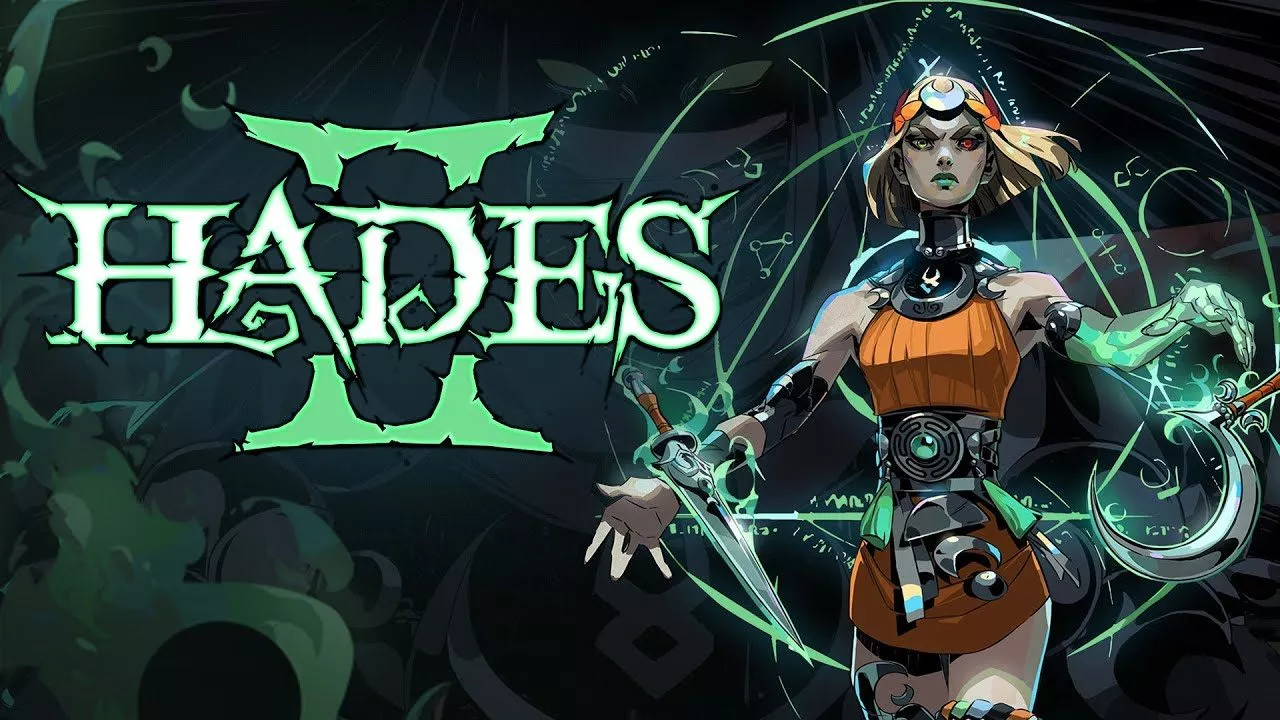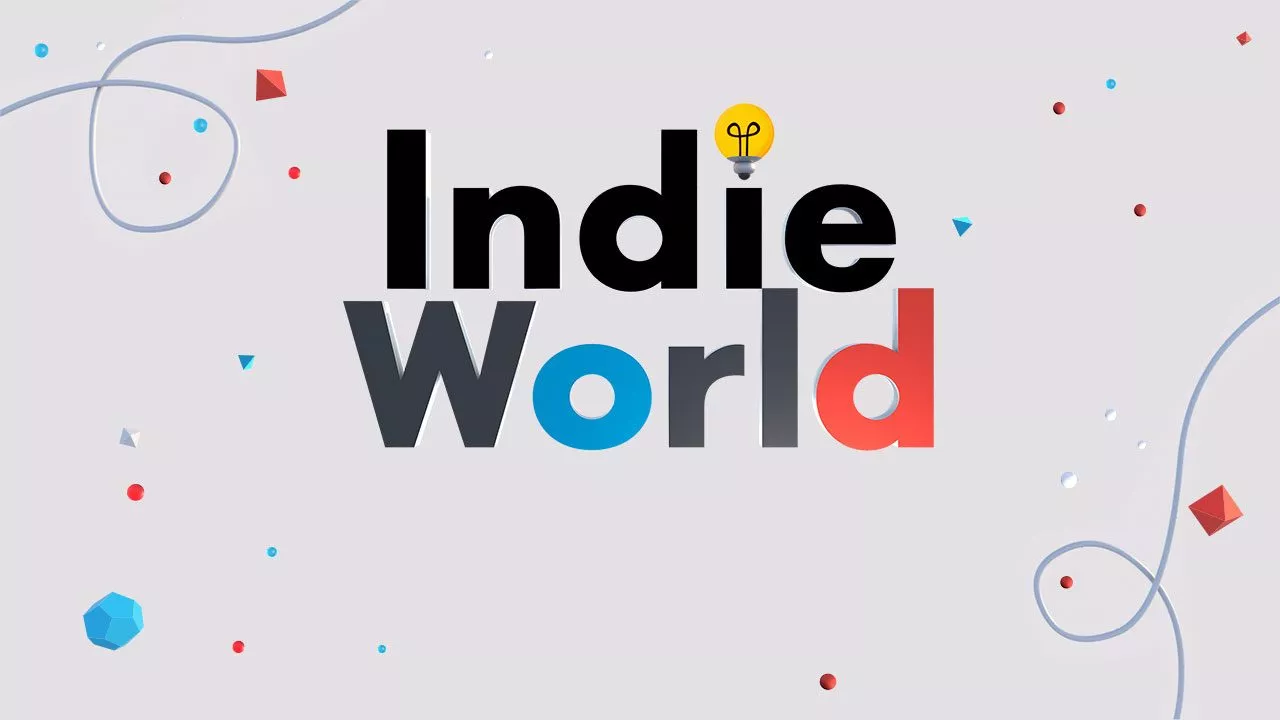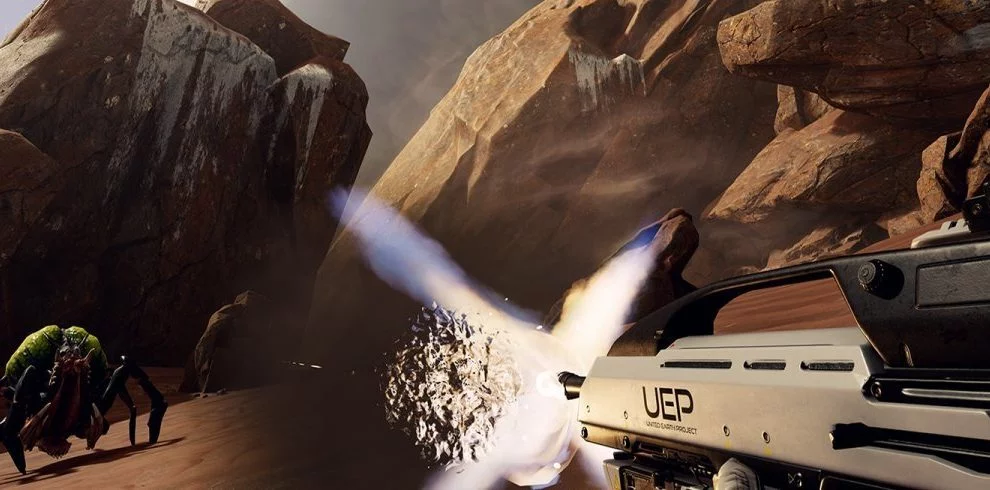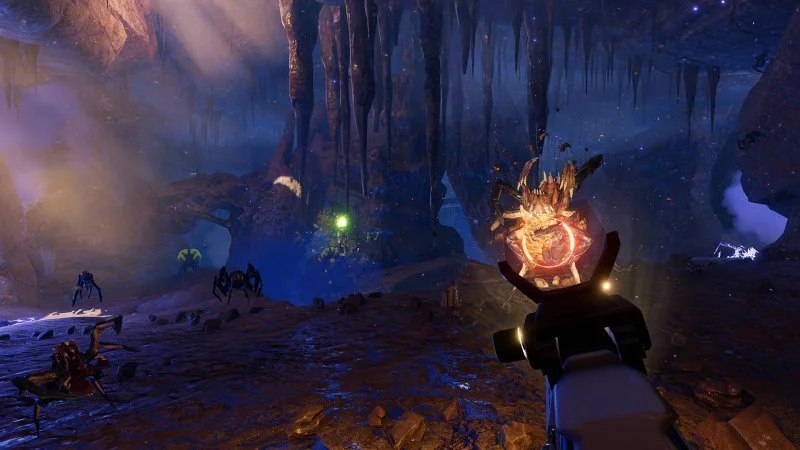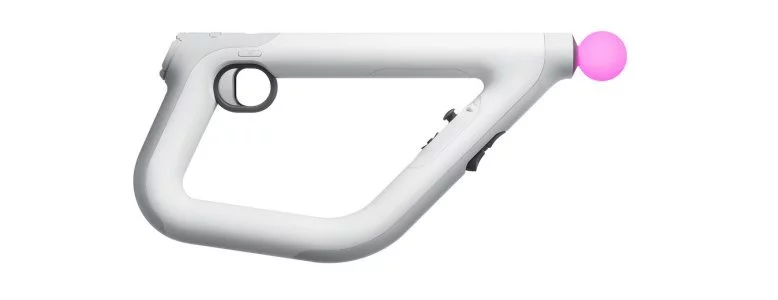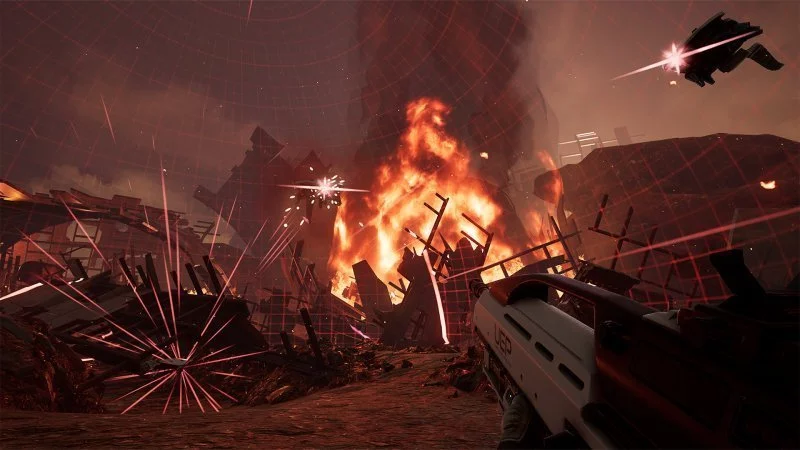Steve Wright, Stevivor: This is a VR shooter, it’s not a shooter that has VR components. It probably wasn’t tacked on to the end of something that was in development. How has that process gone for you? You’ve kind of pioneered, really, of the VR shooter.
Seth Luisi, Impulse Gear: It was created from the ground up around that sort of control scheme and having that controller and one-to-one movement. That was our main focus, was getting that right and getting the controller and the tracking right, the movement and everything else, and then we kind of built the game around that.
Stevivor: So the demo, shown a couple years back at E3 — was that the beginning of Farpoint or kind of a proof of concept that’s sort of related, but not?
Luisi: Well, I mean that planned out the basic control scheme. We did a demo at E3, not last year but the year before, that was using a prototype controller, that was pieced together from a few different things. That was really just looking at the control scheme, how that would work, how it would feel. It’s super important to get that stuff right, so.
Stevivor: What’s your approach to movement in a VR title?
Luisi: A big part of it, again, was kind of going to the controller. The controller allowed us to separate movement from the looking, the direction you’re looking with the camera and everything else. So that you can use the analogue stick and move in any direction and it was very predictable.
So, I think that’s more of the issues that some of them have, is that they do have movement, you kind of get some weird feelings because it’s moving in directions based on your head, which isn’t natural or something else. So we really wanted to have the movement be super predictable, as you move through the world and you understood which direction you were going, that helps a lot making it very comfortable.
Stevivor: I tried killing myself in all ways I could think of. So, I went off a cliff and you can go so far down and then it kind of fades out. And in the single player, when the escape pod hits the ground, it doesn’t hit the ground I’m assuming because of how jarring that would be. I’m assuming that’s you guys researching or looking into how people are getting sick and trying to combat those most common ways?
Luisi: Yeah. We found that in certain situations we can have the camera move, like in the shuttle for instance, at the beginning. When we first put that in it wasn’t comfortable for a number of people, so we had to add on all these different things. We had to put some fog in the glass, so it was very clear that there’s glass there.
Otherwise, we’re looking out and it feels like maybe there isn’t glass there. And then when the shuttle changes direction we put in the thrusters and it would shake. So again, it kind of gave you enough cues, like it’s going to move and change direction. So there is a lot of focus that we have to put on, even kind of things that look small that actually do make a big difference.
Stevivor: Now in that single player, I think the smoke coming from the volcano was the most eye-catching to me. In this era where we’re so concerned with 4K gaming and making things look super crisp and pristine, you obviously have that desire to as well, but you’re limited by way of designing a VR game. How’s that affecting development?
Luisi: I think most people don’t realise, people say it but they don’t really realise how hard it is to make a VR game and make it actually perform. PSVR has a 1080p screen. Most games if they run at 1080p or 4K, they’re running 30 frames per second. It’s like, ‘No, we have to run at 60’.
And then that’s reprojected to 120 and it has to be 60 throughout. It’s not like, even normal games that are 60, they’re 60 most of the times but there’s a number of enemies or whatever, then it drops, and it’s no longer 60, so. We have to really optimise over and over again all aspects of the game to reach the performance.
And then even then, we’re even using supersampling, we’re not rendering at 1080p we’re rendering higher than 1080p, and then it gets super-sampled down and that helps provide a much crisper image. That’s one of the main things we use on the PS4 Pro, is that we can render even higher resolution. And sometimes we render double 1080p resolution and then that’s super-sampled down.
Stevivor: Now I was completely wrong about the Aim controller, I thought for some reason it was more akin to like a Wii piece of plastic and you take a Move and slap it in there, but obviously that is not the case. Can you walk me through it?
Luisi: Absolutely. When we were working on the controller, this was something great that we were able to collaborate with the Sony team on creating this controller. And really looking at it as all-in-one, like you were saying, it’s one piece, you don’t have to stick things in. So that we could really focus on the ergonomics, making it work well, left-handed, right-handed.
We want it to have all the functionality you have with a regular controller, but all there and then it has to be all within easy reach. So that you can easily hit all the buttons and touch everything, so. Having a whole new controller that was dedicated to this allowed us to do all of that.
Stevivor: I’m assuming weight was probably one of those big concerns as well?
Luisi: Yes. We spent a lot of time, not only on weight, but the distribution of the weight. So that when you held it it was equal and not front heavy, or. Because we actually had some earlier ones because they were more, taking different pieces that were off weight and you can feel that after a while.
Stevivor: We actually had people writing in already and saying, ‘Oh, wouldn’t it be cool if it looked more like this,’ and they’re sharing pictures of these ridiculous, heavy-looking sci-fi guns. I’m assuming the more plastic and the different ways they’re distributed kind of goes back to what you were saying — just too heavy, doesn’t feel the right weight. And I guess this isn’t just representing a gun, it’s representing myriad guns.
Luisi: Well that’s the thing. When you’re in VR it’s whatever we put on it, right? That’s going to be your weapon. That’s really where it shines. Our main focus was making it as easy to use and comfortable, as well as just lightweight and all of that. And so, the design sort of came from that.
Stevivor: If you’re playing digitally you don’t have access to this controller. How does the control work at that point? Can you use a couple of Move controllers or are you tied to a DualShock?
Luisi: So we support the Aim controller and the DualShock. We actually use a similar control scheme, obviously I think it’s much better with the Aim controller, but we do use the full tracking of the DS4. And you can use the DS4 and track and have a similar experience.
Stevivor: To the point where you can throw it over your shoulder as well?
Luisi: For that, we have it mapped to triangle and you can switch back — We tried it but yeah, it can lose tracking a little bit too much there. When you use the Aim controller we actually suggest that you stand and you get the full range of motion. But if you are using DS4 we actually kind of recommend you sit down, so that you’re always going to be facing the camera and that tends to get the best experience.
Stevivor: Obviously, SOCOM is a franchise much loved and revered. Has that influenced Farpoint at all? What have you learnt that you’ve brought into this franchise from your past work?
Luisi: I mean, yeah. A lot of it comes down to how the enemies behave, how the weapons feel, you know just tuning of the weapons, making sure that we have some right classes, the recoil of the weapons. There’s lots of small things that go into making it feel really good. And so a lot of that is things that I’ve learned in the past. Working on those past games.
Stevivor: Is there something about the production, about a certain enemy, about a gun, about anything that you want to talk about that you don’t get a chance to because we don’t think to ask you?
Luisi: Sure. This is something that I do like talking about because I don’t think many people, it’s obvious that they haven’t experienced it yet. We’re really excited about the narrative and what we can tell in the single player because being in VR changes the way that you perceive that in a much different way. So having a, I think you’ve played the single player a little where you were scanning the holograms and they were there in their full size, and you’re seeing it right in front of you. Then we also have some recordings that are played back as well. So your visor will come down and it sort of switches to a holodeck view, and then it feels like a play is happening right in front of you because you have these characters there, you can look around and you see their emotion, their interaction.
And then we also have it, where sometimes you’re one of those characters. In those scenes they tend to be really impactful, because you have this other character that’s looking at you, making eye contact with you and you see their full emotion, and full range of emotion on those characters. It really feels like there’s somebody there talking to you, which is something that we just haven’t been able to do before. In many ways, that really influenced the narrative we tell, because we found that so powerful we came up with a narrative that was much more personal based. It’s more about the characters and their journey and how they interact with one another, and sort of the overall emotional state of being stuck on this planet. So we were able to tell a very different narrative than I think we would have if it wasn’t a VR game.
Thanks to Seth for his time.
This article may contain affiliate links, meaning we could earn a small commission if you click-through and make a purchase. Stevivor is an independent outlet and our journalism is in no way influenced by any advertiser or commercial initiative.



